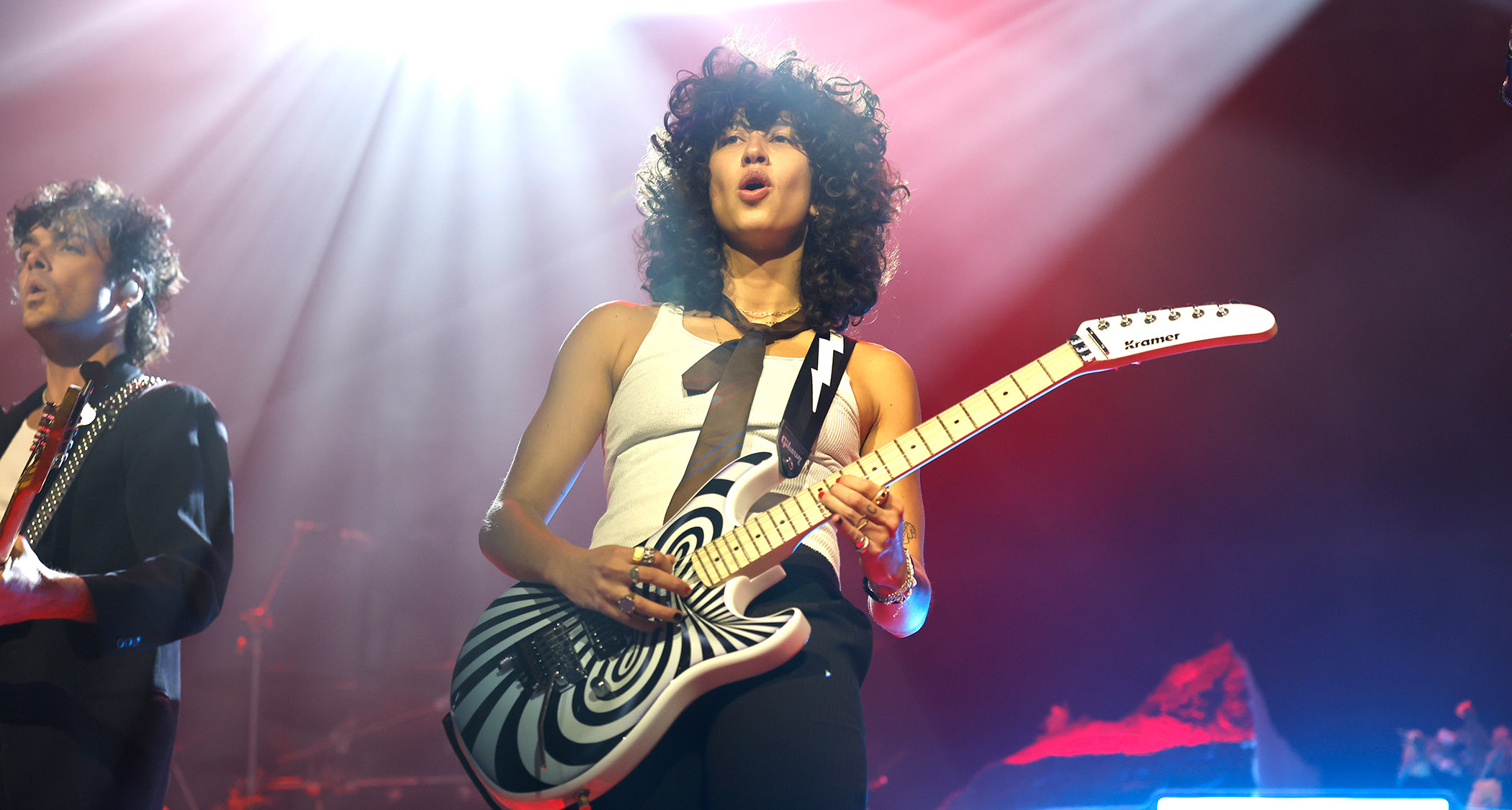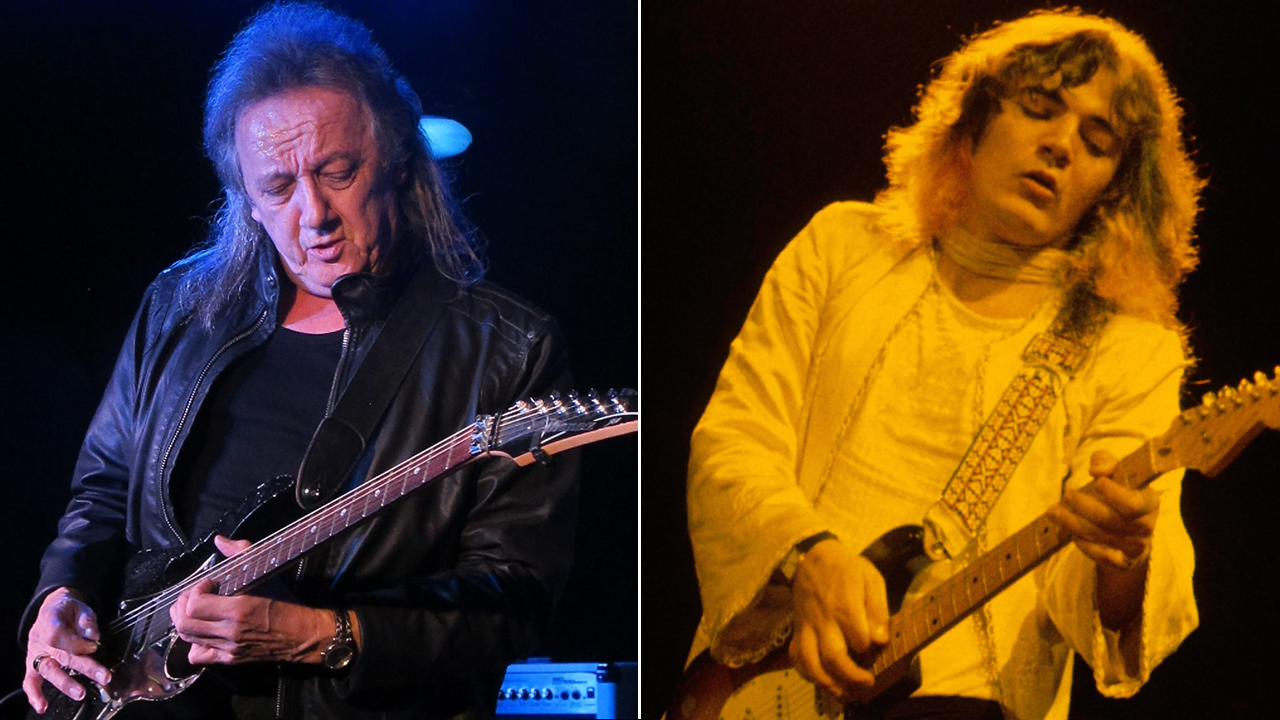“I can’t think of any current guitar heroes that I have. All of my guitar heroes are into their seventies or no longer with us”: Towa Bird is one of Gen Z’s biggest guitar stars – and she built her own brand of energetic rock from classic influences
The viral star of TikTok and late-night television makes her debut with the stellar American Hero, an album steeped in rock history, but with one eye to the future

Traditional paths to rock ’n’ roll stardom – blockbuster album sales and sold-out tours – may have become less and less common in our post-everything world, but Towa Bird isn’t worried. She’s busy punching her own ticket to the top.
Over the past few years, the breakout TikTok guitarist has ridden a wave of online celebrity to a major-label record deal, an appearance on Late Night with Seth Meyers and a scorching performance on Olivia Rodrigo’s Disney+ documentary, Olivia Rodrigo: driving home 2 u. Now, with her debut album, American Hero, the 25-year-old guitarist is finding new ways to use her instrument in popular music by pulling from her classic-rock roots.
“I can’t really think of any current guitar heroes that I have,” she says from her home in Los Angeles. “All of my guitar heroes are either into their seventies or no longer with us.” Bird grew up in Hong Kong, Thailand and London on “a pretty strict diet” of ’60s and ’70s rock ’n’ roll. “That’s how I fell in love with music – listening to Hendrix and Zeppelin and Pink Floyd and the Who,” she says.
Digging through her father’s record collection, she found a bottomless well of inspiration, and then followed the tendrils to rebellious rockers like Joan Jett and enigmatic virtuosos like Prince.
As she expanded her rock music listening, though, groups like the Arctic Monkeys and The 1975 stood out as contemporary favorites. “They still incorporate the guitar, but it’s less of a unique voice and more of a rhythm instrument,” she says.
There were a couple of years where pop music, or popular rock music, was quite cerebral and took itself very seriously. With this record, I really wanted people to feel joyous
Bird’s love of first-wave hard rock – and her knack for pop-music earworms – are immediately apparent on American Hero, released in June on Interscope Records.
“There were a couple of years where pop music, or popular rock music, whatever we’re calling it, was quite cerebral and took itself very seriously,” she says.
All the latest guitar news, interviews, lessons, reviews, deals and more, direct to your inbox!
“And I think with this record, I really wanted people to feel joyous, maybe like they did in the ’60s when they went to a Beatles concert where it was just euphoria and joy, and they could have fun and dance and listen to live instruments and connect with their friends.”
While American Hero is undeniably pop, Bird’s approach to songcraft and production neither marginalize her main instrument nor treat it as mere window dressing. Instead, her guitar is the foundation of American Hero.
Beyond the big-beat drums and sparkling synths, her processed guitar tones on songs like Drain Me and FML are polished, arena ready and 100 percent fun – just how rock should be.
“It was really important as I was writing this project [to consider] how the studio versions would translate onto a live stage, and could I make that feel kind of seamless,” she says. “But also, when they come to a live show, they hear something that’s slightly different from the studio version.”
American Hero follows a series of four singles: Bird released in 2023, culminating with the Live from Terminal 5 EP, which served up live renditions of three tunes, a playful cover of Blur’s Song 2 and a new song, B.I.L.L.S., which gave listeners a glimpse into the direction she would take on her first full-length.
“The B.I.L.L.S. riff is one of my favorite guitar riffs I’ve ever written,” she says. “I like the modes I use; I like that there’s a flat note in there, and it’s so fun to play. It just creates a perfect circle in my brain.”
Armed with her Gibson Firebird and Fender Telecaster, which she ran through myriad amps, stompboxes and even Cory Wong plugins, Bird indulged her proclivity for warmly fuzzed-out and hyper-driven guitar tones. She often writes songs and tracks her parts directly, and then experiments with tones when re-amping.
“There was no one thing that I really stuck to, but I would usually go with a humbucker guitar into the Supro because it heats up really nicely, and you can get a crunch tone if you dig in, which is always really nice,” she says. “The most important thing for me is to get the idea out, and then I will mess around with tones. I use a lot of fuzz pedals.”
For her solo on Boomerang, Bird created the illusion of dueling soloists by tracking two unique guitar parts so it sounds like two different guitar players. “I used two different guitars for that, and two different setups and amp sounds, essentially kind of giving the illusion of a band – but it’s just me.”
For as much guitar ear candy as Bird packed into American Hero, she always keeps a few tricks set aside for the live rock show experience. “Trust me, I’m definitely adding extra guitar solos in there [live],” she says. “I’m taking all of my opportunities to make it feel live and fresh.”
- American Hero is out now via Interscope.
Jim Beaugez has written about music for Rolling Stone, Smithsonian, Guitar World, Guitar Player and many other publications. He created My Life in Five Riffs, a multimedia documentary series for Guitar Player that traces contemporary artists back to their sources of inspiration, and previously spent a decade in the musical instruments industry.
![Towa Bird - Drain Me! [Official Music Video] - YouTube](https://img.youtube.com/vi/V2kuNc5aXek/maxresdefault.jpg)
![Towa Bird - B.I.L.L.S. [Live from Terminal 5] - YouTube](https://img.youtube.com/vi/r-Ihbij2ds4/maxresdefault.jpg)
![Towa Bird - Boomerang [Official Music Video] - YouTube](https://img.youtube.com/vi/TcNHHQQzHDU/maxresdefault.jpg)

